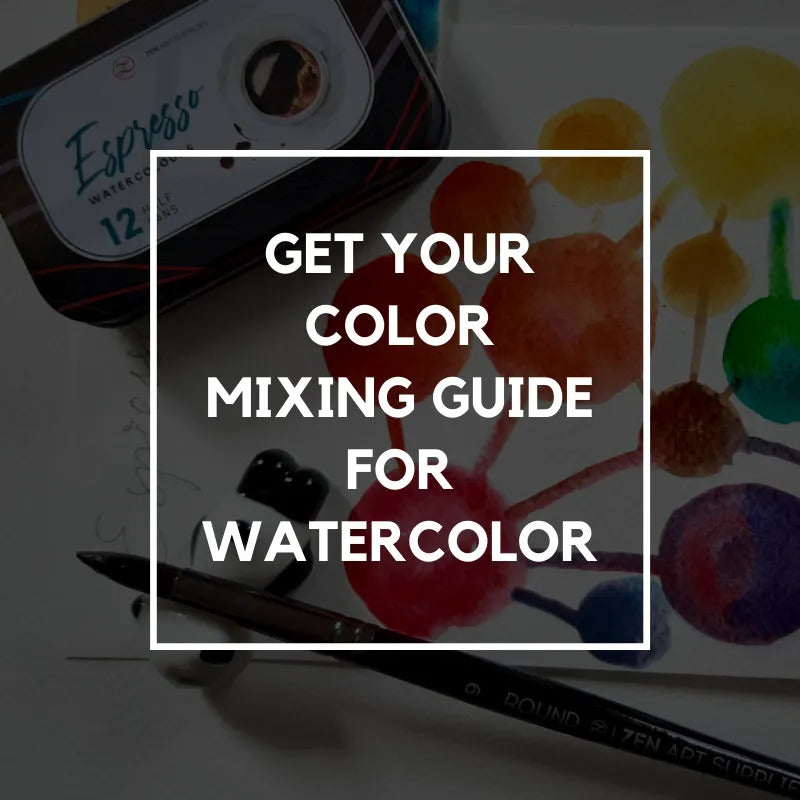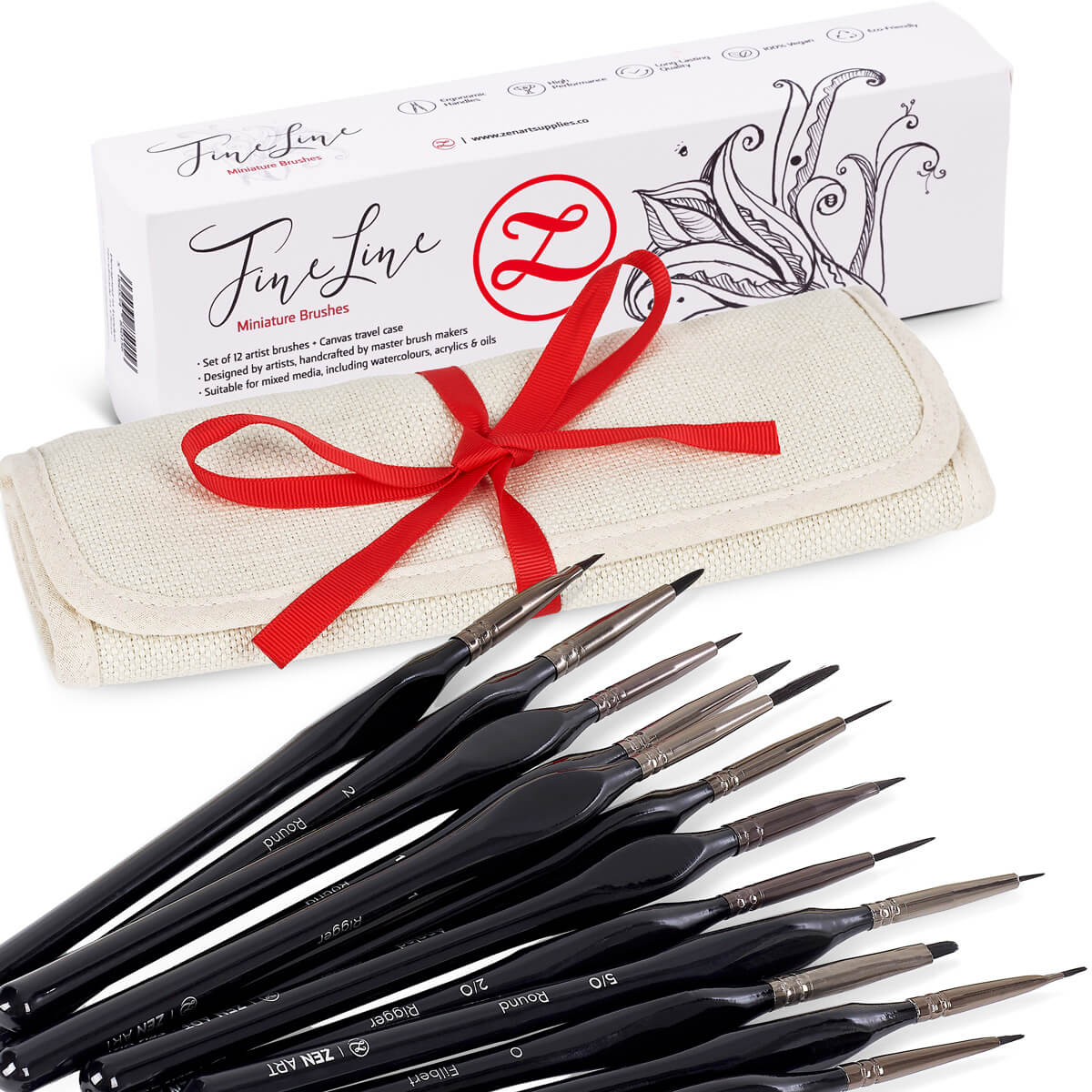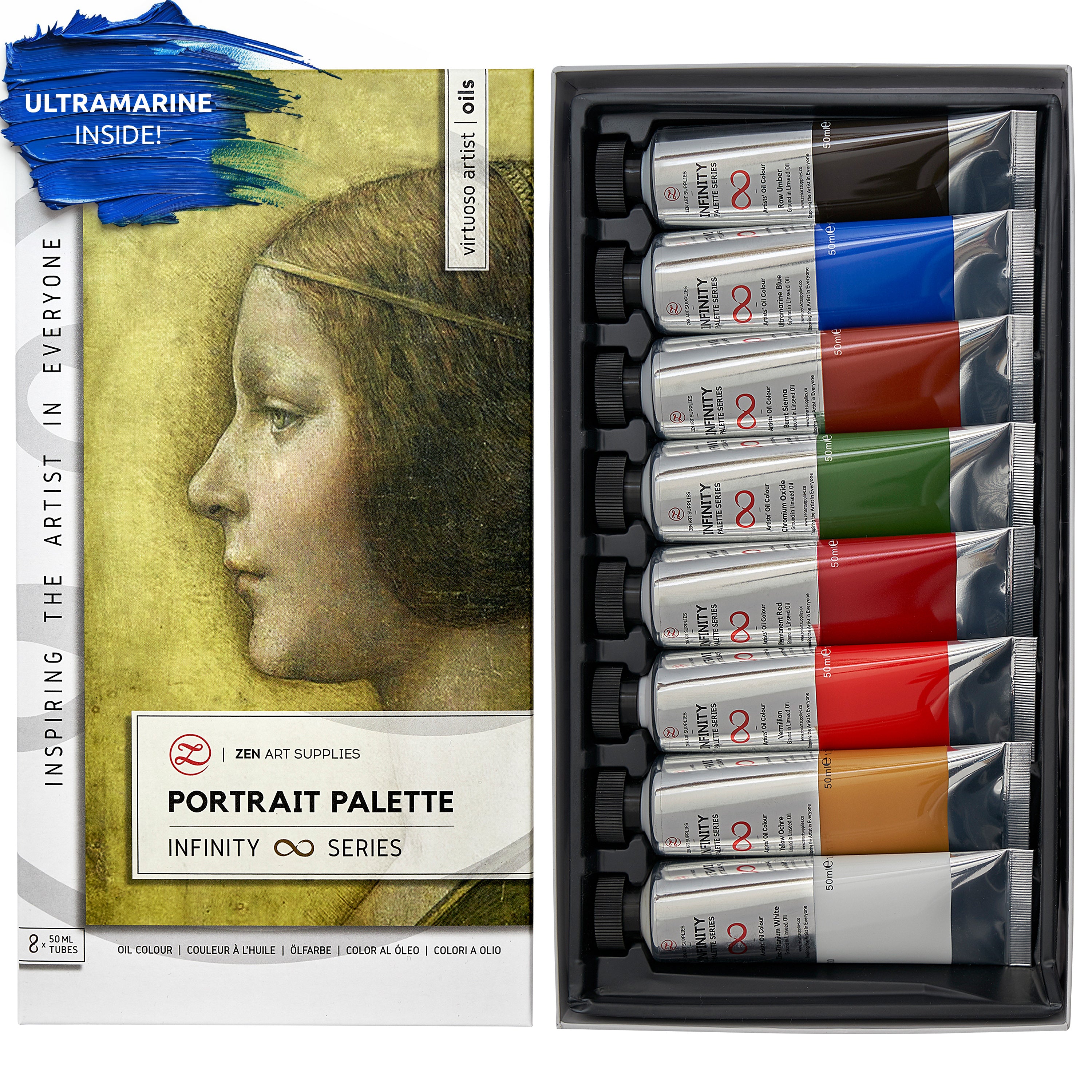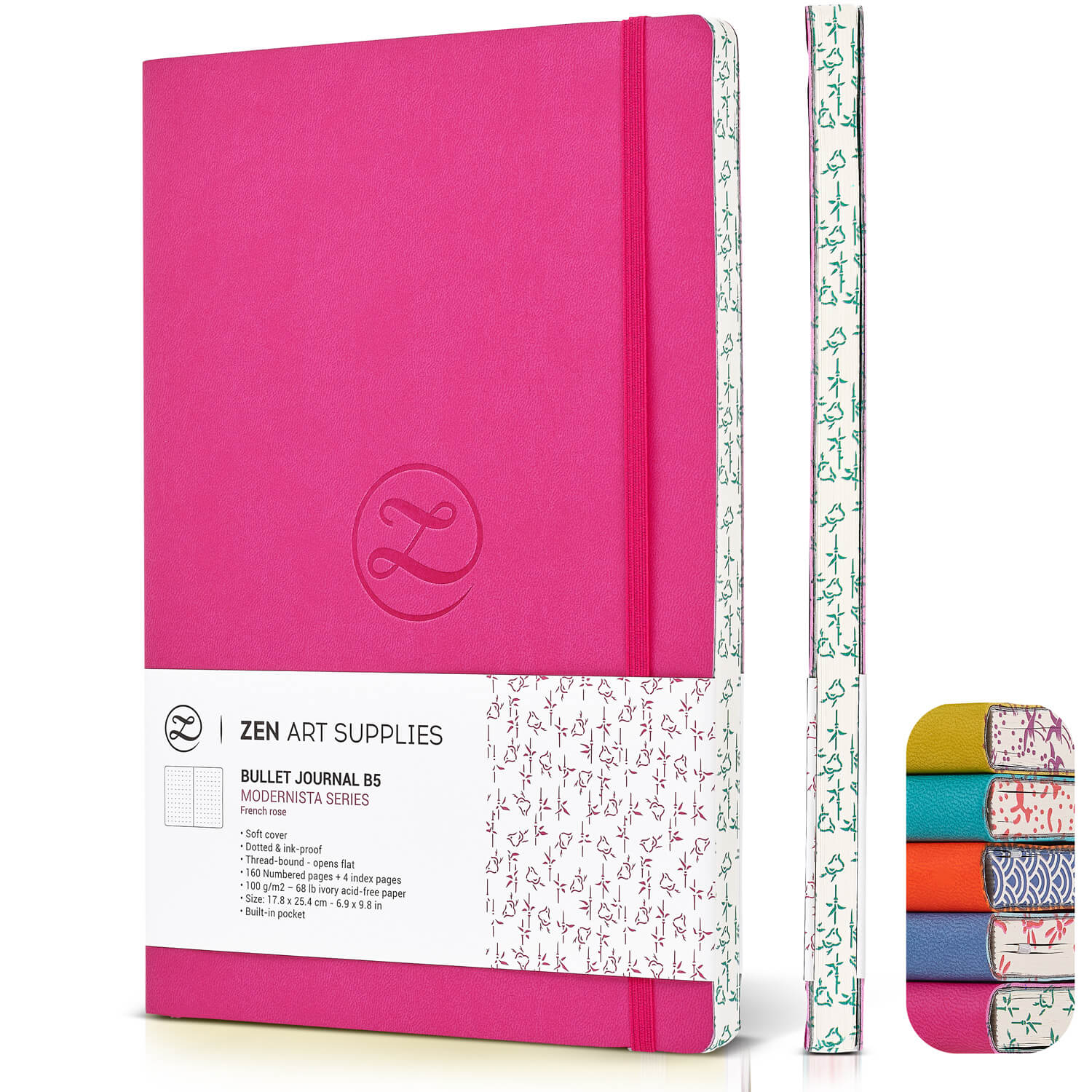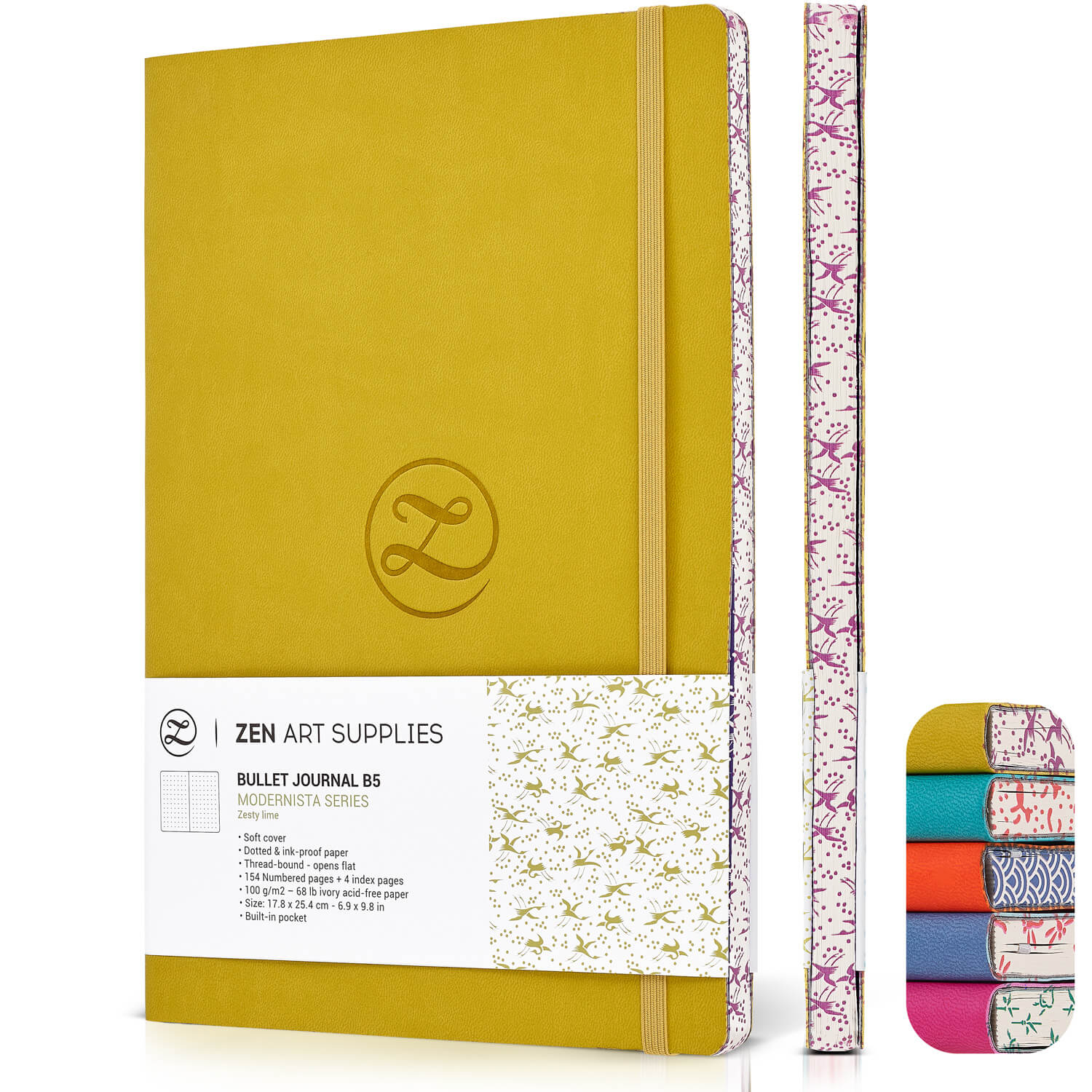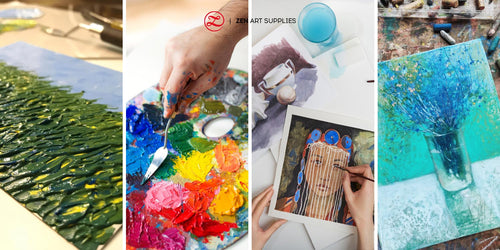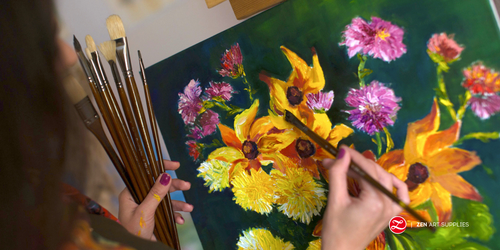Art-making is a wonderful activity to engage your senses, bond with others, and reconnect with our inner child. Maybe you're thinking of art projects to do with kids! Well, you can't go wrong with tempera paint and acrylic paint. Both types of paint are easy to use as they're both water-based and quick-drying, and they can give way to many vibrant and colorful artworks.
But how do you know which one to use? Is one medium better than the other? The short answer: consider your workspace and your upcoming creative project. Generally, tempera paint nowadays is washable and non-toxic while still giving you opaque and vibrant color. Whereas acrylic paint is known for being permanent, with a wide variety of colors and finishes to choose from.
Let's get into both to find out what's the difference between tempera vs. acrylic paint!

Why do artists use tempera paint?
There's something about tempera paint that sparks a nostalgia. Think: those finger-painting classes you enjoyed as a child. But it wasn't always this way. Tempera paint was in vogue during the medieval era up to the early Renaissance period. It was used in wood panel painting, particularly for religious icons.
One famous tempera painting you might know is The Birth of Venus by Sandro Botticelli. That translucent effect you see on Venus's skin just goes to show how detailed you can get with tempera paint. Artists layered tempera paint thinly-also known as glazing-on surfaces to build color, create detail, and mimic the effect of light and shadow.

When we refer to tempera paint today, we think of the inexpensive paint most kids use in school and art class. After the invention of oil paint in the Renaissance era, and then acrylic paints in the 1950s, tempera paint fell out of style. But just because tempera paint is mostly used by kids nowadays doesn't make it less of an art medium.

Tempera paint vs. Acrylic Paint: What makes them similar?
These two types of paint are vastly different. But the main thing they have in common is that they're water-based and quick-drying. You can easily water down these paints to the consistency you like. For example, you can dilute tempera paint in water to finger paint, and you can dilute acrylic paint to create a pouring medium.
You can definitely paint and layer with both acrylic and tempera paint. But you'll want thinner layers for tempera paint as it can crack. You won't get cracking from acrylic paint, which stays flexible when dried due to the polymer binder.
But can you mix tempera paint with acrylic paint? Probably not. You likely won't get the right consistency that you want since they're made up of different binding ingredients.

Acrylic vs. Tempera Paint: What's the big difference?
While both acrylic and tempera paint are water-based, that's as much as they have in common.
The main difference is how permanent they are when they dry. Tempera paint is washable and can be reactivated with water, so at most it's semi-permanent. Whereas acrylic paint dries permanently and is known for its lightfast qualities. Let's compare and contrast the two.
Composition
Paint is made with a combination of pigment powders and something to bind them together. This binder helps the paint stick to a surface like canvas or paper.
Notice when acrylic paint dries, it's similar to rubber or plastic? That's because acrylic paint is made with pigment suspended in an acrylic polymer emulsion.

Now what is tempera paint? This kind of paint is traditionally made up of color pigment, water, and egg. Sometimes it's also made with a milk-based product called casein. Today, the ingredients depend per brand. Generally, tempera contains non-toxic pigments, a binder like starch or cellulose, and preservatives. Because of its organic makeup tempera paint is easy to work with, non-toxic, and washable-must-haves for working with kids whose hands can and will get everywhere.

Permanence and Drying Time
Tempera paint dries quickly because it's water-based and water-activated. As mentioned, it's totally washable. So no worries if you've gotten it accidentally on a surface.
Acrylic paint dries quite rapidly, more so than tempera paint. But once it's dry, it's dry.
So if you're wondering: Is acrylic paint washable? Not entirely. Again, acrylic is water soluble, but once dry it resists water or solvents. It sort of turns into a hardened plastic-like state. You'd best make sure to clean your acrylic paint brushes right away else the paint dries and hardens on your acrylic brush.

Consistency
Tempera paint commonly comes in two forms: in a tube or cup or as a paint cake-kind of like panned watercolor. In terms of consistency, tempera paint becomes creamy in liquid form and is semi-opaque.

Meanwhile, acrylic paint is thicker yet still creamy and can be watered down with other mediums, solvents, and retardants. You might also come across fluid acrylic paint, which is thinner and more viscous and great to use for acrylic pouring projects.

Finish
Tempera paint dries down to a matte, sometimes chalky finish. Acrylic paint, on the other hand, dries semi-glossy. If you're not a fan of the shine, you can get other mediums to create a different varnish for your acrylic paint. An advantage of acrylic paint is your variety of paint finishes and textures. You can find matte acrylic paint, even metallic and iridescent ones!
Surfaces
Will tempera paint stay on canvas? While old tempera paintings have lasted this long with colors that didn't deteriorate much over time, you might not get this same result with tempera paints out on the market right now. These variations are mostly formulated for kids' use. Tempera paint can easily wash off a canvas since the paint reactivates with water. That and it can fade over time, especially when exposed to sunlight.
Still, tempera paint is wonderful for craftwork. You can paint on paper or board, cardstock, and even papier-mâché.
Acrylic paint, on the other hand, is extremely durable and it can stick to many different surfaces. It's a great option for working on wood, metal, fabric, and ceramics besides the usual paper or canvas.
Lightfastness
This refers to how well your colors resist fading over time. Generally, tempera paint is less lightfast than acrylic paint due to its semi-permanent nature. With acrylics, lightfastness varies by paint and brand. You can sometimes see how lightfast an acrylic paint is on the tube or can's packaging. You'll see an "ASTM" label or rating.

Tempera vs. Acrylic: Which one should you use?
At the end of the day-or rather, at the beginning of your creative process-the medium you choose all depends on the surface you're working on as well as the level of permanence you're looking for.
Tempera paint can be used on a variety of craft projects, like papier-mâché or finger-painting. Acrylic paint, on the other hand, is an easy and accessible medium for painting on canvas or paper. Acrylic pouring is also another super fun project you can get into if you don't mind getting your hands dirty.
Many artists and educators love using tempera paint with kids because of its food-grade or organic ingredients and non-toxic makeup. Plus, the benefit of being easy to wash or wipe off surfaces. Tempera paint can also be reactivated with water.
There are also non-toxic acrylic paints available on the market. If you want your artwork to last a long-time we recommend using acrylic paint over tempera paint. The polymer in the acrylic paint keeps it flexible even when dry so your work won't crack. It's also more lightfast and resistant to fading over time.
Whatever your choice, we'd love to hear more from you as you go along your creative journey! Which medium do you prefer? Let us know in the comments below!
Join our friendly art community Painting Inspiration Daily on Facebook. You can share your art and ideas, watch LIVE tutorials, and be inspired to paint! Stay tuned and learn How To Blend Acrylic Paint on our next one!
- MEET THE AUTHOR-

Belle O. Mapa is a writer and artist based in Manila, Philippines. She believes that everyone is born with an inner creative spirit—we just need to nurture and discover it on the blank page. Currently, she lives out her passion: writing stories, hosting journaling workshops, and advocating for mental health awareness.













